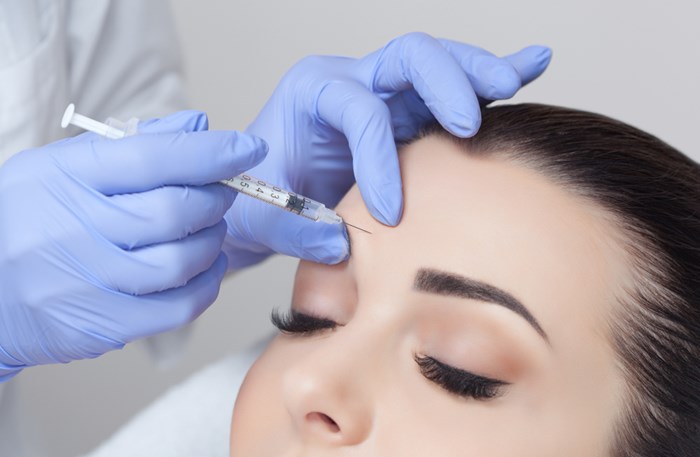Why Choose a Board-Certified Plastic Surgeon
Choose a board-certified plastic surgeon and be confident you are in the care of a highly trained surgeon you can trust.

According to the latest plastic surgery statistics report from the American Society of Plastic Surgeons, there were approximately 7.4 million injections of botulinum toxin (Botox) and 2.6 million dermal filler injections in 2018. This made them the top two most popular minimally invasive cosmetic procedures in America.
Yet there is still much that the public does not know about Botox and dermal fillers. The following covers a few things to know before you get an injectable filler or Botox treatment.
For the most part, the success of these types of minimally invasive cosmetic treatments depends on the skill of the physician. It is very important to inquire about the plastic surgeon's credentials. Board-certified plastic surgeons have specialized training as well as an in-depth understanding of the facial anatomy that makes them better equipped to administer injectables.
Inquire about what specific training the plastic surgeon possesses and how long they have been doing cosmetic injections. Also, ensure that your doctor is a licensed vendor from the company that makes the injectable you are considering. Some manufacturers' websites have a section to do a zip code search for every licensed doctor who is allowed to purchase their product.
Botox averages about $400 per treatment nationwide, but that figure can rise quickly depending on how much surface area you wish to cover and how aggressively you want to treat the fine lines and wrinkles.
Dermal fillers usually range from $500 to $900 per syringe. Hyaluronic acid (HA) fillers such as JUVÉDERM® and Restylane® average close to $700 per syringe. Note that in some cases, multiple syringes may be needed to achieve the look you want.
One thing that most plastic surgeons would advise against is bringing in celebrity pictures and requesting features like theirs. Instead, consider bringing in a picture of yourself in your 20s, since that is usually when your face was the fullest.
Also, be open to recommendations for procedures which you may not have considered initially – an injectable treatment alone may not achieve your desired look. Remember that the providers still need to perform their work using the proportions of your features. It is recommended to use a gradual approach and add more later. Plus, you should always feel at ease with changing your mind.
Botox is a common household name, but there are other botulinum toxin injections on the market aside from BOTOX®, including Dysport® and Xeomin®. These injections are typically used to treat wrinkles in the upper face, around the eyes and on the forehead. Dermal fillers are placed beneath the skin to provide support and volume in multiple facial areas including the lips, around the mouth and on the jawline.
Botulinum toxin injections can be done at a lunchtime appointment. You do not need to do anything beforehand or after your treatment; the only precautions are to keep your head elevated and avoid vigorous exercise for approximately four hours after being treated. Also, do not rub or massage the injection site because it can cause the injected solution to migrate.
It typically takes about a week for Botox results to gradually show, as the targeted facial muscles causing wrinkles to begin to relax. If you're looking for quicker results, injectable fillers plump and fill the skin immediately during your appointment. However, since some amount of swelling and bruising are common side effects of dermal filler injections, particularly in sensitive areas like the lips, make injection appointments at least two days before any major events.
Factors affecting the length of results include how much product was injected, the product used and where it was administered in the face. Generally, botulinum toxin lasts roughly 3-4 months while hyaluronic acid fillers average anywhere from 9-12 months. If you are pleased with the procedure, anticipate making this a part of your beauty regimen that will require some upkeep.
On the other hand, if you do not like the results, know that hyaluronic acid fillers are reversible. An enzyme can be injected that will dissolve the filler within a day. Botox is not immediately reversible, but the effects are not permanent and will eventually wear off without repeated treatments.
Although injectables like Botox and dermal fillers are relatively safe and effective, there are some potential side effects as with most cosmetic treatments. Redness, bruising and swelling in the injection site is quite typical.
However, more serious complications such as experiencing flu-like symptoms, headache, nausea, bleeding at the injection site and skin rash with itchiness may require a call or visit to your physician. Be sure to discuss any potential risks with your plastic surgeon before your injections to know what to look for and how to respond.
The American Society of Plastic Surgeons (ASPS) has plenty of information available regarding both Botox and dermal fillers. ASPS also offers resources through Plastic Surgery Connect to help you find a board-certified plastic surgeon in your area.
The views expressed in this blog are those of the author and do not necessarily reflect the opinions of the American Society of Plastic Surgeons.















